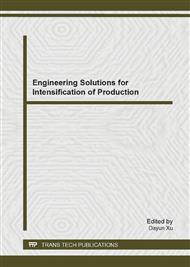p.341
p.344
p.351
p.357
p.364
p.370
p.378
p.385
p.392
A Joint Improved Irregular Accumulate Concatenated Tree Coding and Frequency Hopping OFDM Modulation Scheme for Wireless Networks
Abstract:
Joint channel coding and spread spectrum modulation technologies bring to wireless networks the tremendous amount of performance improvement, the elimination, and the mitigation of interference. This paper proposes an improved design for irregular accumulate concatenated tree (IACT) codes, which can be viewed as simply precoded by an accumulator. This class of codes belongs to the special turbo-like codes, which combines the advantages of fast encoder structures of turbo codes, and the advantages of parallel high-speed belief-propagation (BP) iterative decoding algorithm of low-density parity-check (LDPC) codes. The improved IACT codes can be coded via a Tanner graph. With these improved codes, we propose a joint IACT coding and frequency hopping orthogonal frequency division multiplexing (FH-OFDM) modulation scheme for wireless networks. We compare the performance of different coding bases such as the irregular concatenated tree (ICT) codes and turbo codes in the scheme by theoretical analysis and simulation. Numerical results are shown that the proposed scheme with these IACT codes has really good performance.
Info:
Periodical:
Pages:
364-369
Citation:
Online since:
February 2014
Authors:
Price:
Сopyright:
© 2014 Trans Tech Publications Ltd. All Rights Reserved
Share:
Citation:


